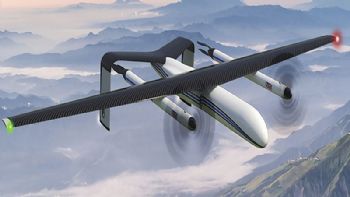
Bicester-based Wirth Research (
www.wirthresearch.com) has released pictures and details of its new tilt-rotor VTOL (vertical take-off and landing) terrain-mapping drone, which is powered by a hydrogen fuel cell and is being developed in partnership with the Singapore company HES (a leading specialist in ultra-light hydrogen fuel cells).
The key advantage of the Wirth Research unmanned aerial system (UAS) is the combination of its VTOL capability, allowing it to take off and land in very restricted terrain, with its ultra-long endurance.
These capabilities, along with the variety of payloads it can carry, mean that this UAS has applications in a large number of sectors — from agriculture, to pipeline and cable inspection for utilities, surveillance and other security-related tasks, through to detection and monitoring support for ordnance-clearing operations.
Nick Wirth, Wirth Research founder and CEO, said: “It has been extremely challenging for Wirth Research to meet the requirements of VTOL capability, 6hr mission endurance, packaging a bulky payload mass and providing that payload with hundreds of watts of continuous electrical power.
“Solving these issues has required extensive and creative use of our unique computational fluid dynamics technology and will demonstrate that Wirth Research’s UAS technology has almost limitless application across multiple sectors.
“I’m also looking forward to developing further versions of this UAS concept for cargo transportation applications, for which it’s ideally suited by virtue of its combination of VTOL capabilities with long endurance and zero
emissions.”
Taras Wankewycz , HES founder and CEO, said: “The VTOL UAS developed by Wirth Research and powered by HES technology breaks new ground in the field of small but increasingly capable aerial robotics.
“There is no equivalent aircraft in the world able to demonstrate this level of flight endurance. We are moving from a 200Wh/kg lithium battery capability to a 700Wh/kg fuel cell. This level of energy density can radically change the applicability of drones.”